
mcdonald
Student News
Summer 2010- Karen Johnson
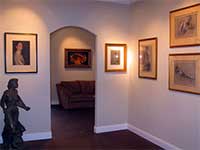
Napa Gallery
This year, I spent my second summer working at the Quent Cordair Fine Art gallery in Napa, California. The gallery exhibits work in a variety of mediums, all falling within the genre of romantic realism. My duties were pretty varied. While I was hired as an art salesperson, I also did a lot of work in marketing, web design, and organization. I learned about the safest ways to clean paintings and bronze or bonded sand statues. I was in contact with the wineries, hotels and transportation companies in the Napa valley, working to make the gallery a number one destination for tourists and wine industry events. I worked at weekly wine pourings and organized a variety of social networking sites to contact potential patrons and learned a great deal about business communications, as well as marketing art to individuals and corporations.

mcdonald
Alumni
We are proud to announce that Samantha Erin Safer, Art History Department
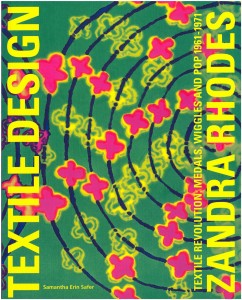
Textile Design: Zandra Rhodes
Graduate of 2004 has just written a book titled Zandra Rhodes: Textile Revolution: Medals, Wiggles, and Pop 1961-1971. Published by the Antiques Collectors Club, Ltd. in Suffolk, England, this lavishly illustrated book is a major study of the visionary British textile and fashion designer Rhodes. Samantha became interested in Rhodes while studying abroad in London and interned with her design studio. Not only did she write a fabulous senior project titled Zandra Rhodes and Her Knitted Circle: Creating the Woman and Her Work, 1965-1977 (Advisor Prof. Susan Aberth), but she also put on an exhibition of Rhodes’ textiles in the our Student Center. Ms. Safer has two masters degrees: History of Design from the Royal College of Art, and Design Management from the London College of Fashion. She is currently working for the Victoria & Albert Museum as the Brand Marketing Manager. In addition, she was Assistant Curator of the Fashion and Textile Museum working on several exhibitions such as My Favorite Dress, Zandra Rhodes: A Life Long Love Affair with Textiles, Identity: Celebrating 25 Years of i.D Magazine, as well as various traveling exhibitions around Europe. She was a contributing author to Lucile Ltd London (V&A, 2009) and Grace Kelly Style (V&A, 2010), and co-authored My Favorite Dress (ACC Editions, 2009).

mcdonald
Faculty News
On Thursday, October 7th Prof. Laurie Dahlberg gave a talk at Concordia University, Montreal, Canada titled “Amateur/Amateur: Thoughts on the Devolution of a Gentleman’s Art.”
Click on the below link for more details.
LD phot poster

mcdonald
Faculty News
I’m a physical chemist in the physics program with a long-standing personal interest in art history. I’m teaching a new course this semester about the chemistry of photography. Since the goal of the course is to understand the chemistry of light-sensitive materials, the first four weeks have stressed light and color, ionic and covalent compounds, and chemical reactions. Alongside these topics, we’ve studied, and made, dichromate prints, cyanotypes, and diazo prints. In contrast to conventional photography, none of these processes involve silver.
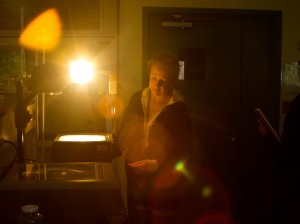
- Student making diazo prints
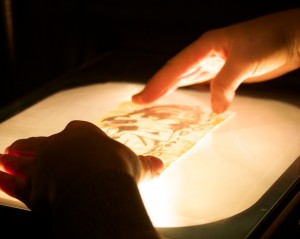
- Diazo Prints
In the cyanotype process, a paper coated with a yellow light-sensitive solution is exposed to sunlight. Within a few minutes, ultraviolet light induces the formation of an iron compound known as Prussian blue in exposed areas. It’s quite magical. The cyanotype process was invented by the renowned astronomer Sir John Herschel in the 1840s. Prussian blue itself is part of another story. Discovered in the early 1700s, it is the first modern artificial pigment and displaced ultramarine and cobalt blue from artists’ palettes.
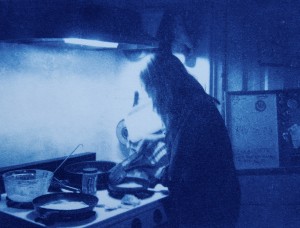
A stunning cyanotype made from a black and white negative.
We’re now moving on to the chemistry of silver-based photography using a wonderful book by Roger Bunting called The Chemistry of Photography. The highlight of this week’s experiment is making a silver mirror. Next week, we’ll make salted paper prints, the precursor to silver/emulsion photography.
Photos and cyanotype: Kazio Sosnowski

mcdonald
Man About Town
After looking at Judy Pfaff’s exhibition in Chelsea, don’t miss Dan Flavin’s light pieces at Paula Cooper (534 W. 21), and Sue Williams’ mini-retrospective the at 303 Gallery (547 W. 21). It omits some highlights from her career, but she is a fine painter. As much as she tries to gross you out, she always brings along her painterly finesse. And check out Bard Prof. An-My Lê’s luminous, large-scale photographs taken from the decks of battle ships by this world traveler, at the Murray Guy Gallery (453 W. 17).

Manning the Rail, USS Tortuga, Java Sea, 2010
You can see an earlier example of An-My’s work front and center at the critically praised The Original Copy: Photography of Sculpture, 1839 to Today at MoMA (11 W. 53), a wide-ranging and original exhibition that also includes Bard Prof. Larry Fink. The show is right next to MoMA’s Matisse, Radical Invention 1913-1917, a not-to-be missed survey of one of the modern master’s most daring artistic periods.

mcdonald
Faculty News
Summer 2010 – Julia Rosenbaum

Photograph from a "strip map" of the Hudson.
An NEH Summer Institute Fellowship took me to Chicago for most of the summer for research at the Newberry Library. I am working on a couple of new projects related to mapping and art (one focusing on the Hudson River and tourism in the early 1800s) and the Newberry has an extraordinary collection of European and American maps from all periods as well as rich historical materials. Chicago is also a city rich in 20th-century American art and architecture so I was also able to look closely at artwork I teach and work on. (The other great thing about Chicago is its food scene, so, as a confirmed foodie, I “studied” it very thoroughly.) Other projects that kept me busy were finalizing the text for a volume of essays on class identity that is being published this winter and writing a paper focusing on artistic responses to new mid-19thc. technologies for the Association of Historians of American Art symposium I’m speaking at this fall.

mcdonald
Faculty News
Summer 2010 – Prof. Tom Wolf
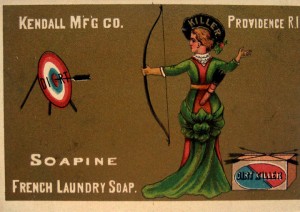
Lady Archer Soapine Card
I continued my research about Asian-American artists by visiting a descendant of a fascinating, overlooked Japanese American set designer in Seattle. But most of my summer was devoted to writing an article about the famous feminist writer, Charlotte Perkins Gilman. Early in her career, in the 1880s, she worked as an artist, and her first husband was an painter. Although a tremendous amount has been written about her (over 40 books) no one has really analyzed the art of her formative years: the significance of the art she made in terms of gender issues, and the relation between her artistic concerns and those of her husband. They lived in Providence, Rhode Island, which I visited several times to do research about their artistic context, and which will be incorporated in the essay I plan to submit for publication soon.

mcdonald
Faculty News
Summer 2010 – Noah Chasin

Lagos
Summer is a very conflicted season for academics. On the one hand, we are “not working” in the conventional sense, leading many friends and family members to believe that we have a guilt-free three-and-a-half-month vacation. The reality is that summer is when academics get the chance to focus on their own research in the absence of preparing class lectures, grading, committee work, and meeting with students. I was able to get away for a couple of weeks to Costa Rica with my family, but even there, writing continued on my most pressing project, a book-length manuscript on Team 10 and the ethics of participatory urbanism. My research focuses on the immediate postwar period in Europe where architects (working on the urban scale) undertook an approach to urban reconstruction that was radically different from their predecessors. Different because instead of assuming that the architect/designer was the supreme hand guiding the development of urban morphology, Team 10 felt that eliciting the input of once and future residents of a city would ground the metropolis both historically and functionally in a more ‘user-friendly’ format. My argument holds that Team 10’s work in the 1950s-70s foreshadows a lot of contemporary urban design practices that advocate for ad-hoc, self-organized, and participatory urban interventions. I also began working on an article derived from the aforementioned project on John Turner’s sites and services projects for the World Bank in the late-1960s. I published an article in the Journal of Architectural Education entitled “Democracy, Deliberation, and Hybridity in Three Contemporary Architectural Practices: Interboro, Apolonija Šuštersi?, and Stealth,” and just at the end of the summer completed an article for ArtForum entitled ““STEALTH.unlimited: What It Takes To Make (And Un-Make) A City.”

mcdonald
Student Opportunities

Clark Art Institute Main Entrance
On Saturday, September 25th, Prof. Laurie Dahlberg will be taking her class, Arth 258 Manet to Matisse, to the Clark Institute in Williamstown, Massachusetts. There are available seats on the school bus and the Art History Program invites you, for the nominal fee of $15., to take this opportunity to visit the Clark, http://www.clarkart.edu/ and experience its many exhibits. The school bus will leave Kline Commons parking lot at 9:00 am, the trip is under two hours, and the bus will leave the Clark at 3:00 to return to Bard. If you are interested, please visit the art history office, Fisher Annex 112, and sign up.

mcdonald
Student News
Summer 2010 – Miriam Natis

Chancellor Livingston Grand Lodge
This summer I worked for the Masonic Library and Museum in the Grand Lodge of New York. It was an interesting experience, working for a not-so-secret secret organization, especially because I couldn’t know some things and wasn’t supposed to know others. Despite being a touch surreal, it was definitely worthwhile. I spent my summer in a temperature controlled room where they house the books and artifacts, doing inventory. I handled artifacts dating from c. 400 CE to the present, and only cracked the surface of all that needed to be inventoried. I worked for Catherine Walker, the curator of the museum part of the library, who previously worked at the Natural History Museum, and if I’ve learned only one thing this summer, it’s the importance of gloves.
http://lodgesonline.com/Lodges/NY/1/Images/gllogo.gif
Last summer I worked for Fly 16×9, a digital fashion art magazine. It was a very small production, sharing an office with other companies in an intimate environment. I spent my time photoshopping models, such as the above, and doing research on the Internet. I also gave my input on videos and interviews they had done. It was a much more hands on experience with the current art world, and gave me a good understanding of what goes on behind the scenes of popular media.
http://www.ozonweb.com/gr/files/2010/03/a-face-odyssey.jpg










